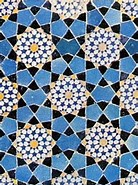In a recent discovering mathematics workshop, we explored the mathematics behind various different games and puzzles. Board games are always something I loved as a young child. I would spend many days with friends and family surrounding a board game and having fun.
In this workshop we began looking at Sudoku. A standard game consists of a 9 x 9 grid with 81 cells however this can vary for more advanced and difficult Sudoku players. The aim of the game is to have the numbers 1-9 in a row, column and in a square. Normally when you start there will be some numbers that are already filled in and then you have to try and explore the different numbers that could fit. This is a game I have spent many plane rides or long car journeys playing however I have never really thought about the mathematical concepts behind this game. Some of the basic mathematical concepts in Sudoku is number, sequencing and problem solving. Throughout the workshop I learned that there are many different mathematical ways that people use in order to complete a Sudoku challenge. Upon further research I also found out that there 6670903752021072936960 different solutions to a standard 9 x 9 Sudoku grid (Felgenhauer & Jarvis, 2005).
Do you think you can complete a Sudoku? Give it a go!

We then went into groups to investigate different games and decide what mathematical processes were involved. My group decided to look into the game of battleships. In this game you place your ships of various sizes in different places on the grid. You then take it in turns to guess the co-ordinates that your opponent’s ships are on. If you manage to hit the ship, then you have to keep going until you manage to sink the full ship. The game is over when a player manages to sink all of the other players ships. The mathematical processes that are involved in battleships include co-ordinates, rows, columns and positioning which are all very important mathematical processes. This highlights that teaching one of these concepts can be done through a fun and engaging way.

Although you do not need basic arithmetical skills for board games, you do need to have a secure knowledge of other basic mathematical concepts in order to play games such as Sudoku and Battleships successfully. One thing I have learned from this workshop is that the teaching of mathematics can be very supported through playing games. By reinforcing mathematical concepts this way, the children will become engaged and interested and as a result they will be encouraged to explore many mathematical concepts. As a teacher, this is something I will remember in the future as I feel as though it would be beneficial to both my practice and for my future class.
Felgenhauer, B. and Jarvis, F. (2005) Enumerating possible Sudoku grids [Online]. Available at: http://www.afjarvis.staff.shef.ac.uk/sudoku/sudoku.pdf (accessed: 27/11/2017

